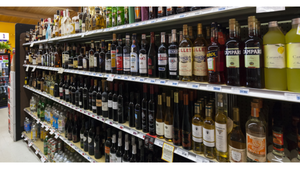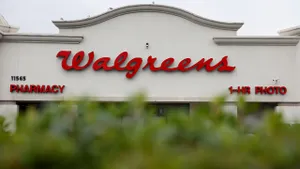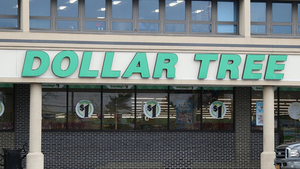GIANT FOOD RESETS ITS BUSINESS PLAN
LANDOVER, Md. -- Giant Food here unveiled a wide-ranging business plan that will reshape everything from the pace of store expansion to the strategy for acquisitions, Pete Manos, chairman, president and chief executive officer, said in a speech.The program, intended to "restore the company to sound financial health," will aim to grow same-store sales and markedly reduce selling, general and administrative
February 16, 1998
DAVID ORGEL
LANDOVER, Md. -- Giant Food here unveiled a wide-ranging business plan that will reshape everything from the pace of store expansion to the strategy for acquisitions, Pete Manos, chairman, president and chief executive officer, said in a speech.
The program, intended to "restore the company to sound financial health," will aim to grow same-store sales and markedly reduce selling, general and administrative expenses, Manos said.
"Our business plan will result in what some of us see as a totally new Giant Food and Pharmacy business in the next few years with changes unlike anything ever experienced in our corporate history," Manos said. He spoke at the annual Donaldson, Lufkin & Jenrette Food & Drug Retailing Conference in New York.
Manos said the 179-store chain is pulling back from the rate of expansion in its Northern market, which now includes 13 stores in Delaware, New Jersey and Pennsylvania. This region is the most recent expansion market for Giant.
"We have decided to slow our pace of growth in the Northern territory to give us time to create new store models that can profitably meet competitive challenges and achieve the required return on investment," he said. In Giant's long-standing operating area of Maryland, Virginia and the District of Columbia, the company will "focus on store development in what we call mature markets, which are currently underserved by conventional supermarkets," Manos said. "We will explore options that may generate new stores that are smaller than our historical new store footprint, which has averaged 55,000 to 65,000 square feet."
However, for the short term, Giant will slow its overall new store growth. "This year we have opened 11 stores, but next year [beginning March 1] we are scheduled to open three," said Mark Berey, senior vice president, treasurer and chief financial officer. "So there will be fewer openings, but after that it will grow."
Giant, which operates 143 pharmacies, almost all in-store, will open additional freestanding pharmacies in the Washington-Baltimore metro area as it completes decisions on sites, Manos said.
The chain is also changing its attitude about acquisitions. "Traditionally, we have turned thumbs down on the possibility of acquiring other smaller, regional food chains," Manos said. "With the adoption of our new business plan, we are changing our long-standing philosophy on acquisitions and will review opportunities as they arise."
Berey said such a deal wouldn't have to be limited, say, to under $1 billion. "We have a lot of borrowing capacity, so we could do it in the $2 billion to $3 billion range."
British retailer J. Sainsbury has a 20% holding in Giant and four of nine seats on the board, but Manos stressed that Giant's new business plan is being generated by the chain.
"We're running our own business," he said. "These are initiatives being instituted by Giant."
Giant's new plan is geared heavily to improving same-store sales, Manos stressed. Giant, which was hit with a major Teamsters strike during 1997, posted negative same-store sales throughout that year and pulled into positive territory in the first quarter of 1998.
In the third quarter ended Nov. 1, which is the latest reported period, Giant said same-store sales rose 2.15%. The year-to-date same-store increase was 1.7%. In that quarter net income declined 35.2% to $12.2 million.
Fueling sales gains would be new marketing strategies that might include a frequent-shopper card and an expanded category management effort. The chain will soon unveil its new prototype and is growing home-meal replacement efforts. Manos said that the company anticipates its sales for the fiscal year ending Feb. 28 will be $4.2 billion, which compares with $3.9 billion in the year-ago period.
Giant is particularly intent on slashing SG&A expenses, Manos emphasized. In the first three quarters of the current fiscal year, Giant's SG&A, at $726 million, represented 25.8% of sales.
"You don't have to tell us that our SG&A expenses are high when compared to other food chains," he said. "We know it and we are firmly committed toward lowering our SG&A."
Manos said Giant is implementing a new program, dubbed "Operation Millennium," whose goal is to "reduce the company's SG&A costs over the next three years in a measured and well-planned performance model." The chain has retained several consulting firms for this effort, he said.
Another element of the company's business plan is a "comprehensive review of our balance-sheet structure and our various lines of business such as investing our cash more productively," Manos said.
This effort includes studying real estate holdings, increasing the level of outsourcing, and developing new accounting systems and creating new systems for improved financial reporting.
About the Author
You May Also Like




